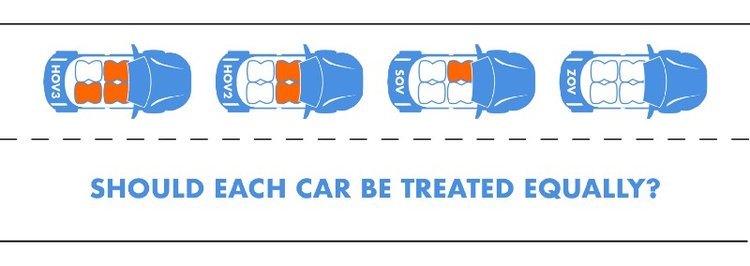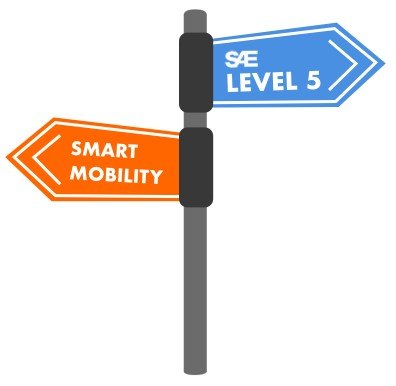What is Our Plan for Zero-Occupancy Vehicles?
May 28, 2019
This opinion piece was written by Carma’s Chief Product Officer and initially appeared in Fast Company.
In the transportation world, there has always been consensus that there is nothing worse than the single-occupancy vehicle. But there soon could be.
A common techno-utopian vision of the near-future city is one where automated vehicles come when called and whisk you to your destination, as you sit, relaxed and untroubled by traffic. But consider the opposite vision, that gridlock will be made worse by autonomous vehicles, which will spend much of their time driving around the city with no passengers. There is simply nothing about a vehicle being autonomous that makes it more likely to achieve higher occupancy. In fact, the current trajectory of AV deployment roadmaps and our transportation policy response ensures its average occupancy will be lower.
Car occupancy has always been pretty stable, with an average of 1.1 occupants at peak travel times. Outside of a limited number of areas where there are high-occupancy vehicles lanes or toll discounts, little effort has been made to incentivize a behavioral change. A small upward change of average vehicle occupancy (to, say, 1.2 or 1.3) would completely eradicate traffic congestion in our cities. Similarly, a small downward change (say 1.0 or 0.9) will be devastating.
Now consider our driverless utopia: a fleet of cars that we can summon at the touch of a button. Consider that these cars will be empty most of the time –repositioning, waiting, traveling on deadhead return trips. Consider that travel demand spikes predictably two times per day, that cars are idle 95% of the time, and that most people live in suburbs or exurbs. How do empty AVs sitting in traffic impact our largest transportation problem? They make it much worse. Faith in driving pattern algorithms alone reducing traffic is misplaced given the relative sensitivity of congestion to occupancy versus to driving skill. And so a correction of priorities is required.
LEVEL 5 IS THE WRONG DESTINATION
Today the dominant framework for understanding the development of AVs is what’s called the SAE Levels of Automation. It has been wholeheartedly adopted by everyone from auto companies to the highest levels of transportation authorities, including the U.S. Department of Transportation (USDOT). It is a staple of almost every presentation you will see on AVs. And level 5 autonomy is presented in our media as the pinnacle of disruptive mobility , as though we are more likely to carpool simply because a car is autonomous.
However, it’s important to note that SAE stands for the Society of Automobile Engineers. The prism through which we view the development of autonomous mobility is an engineering framework. It simply describes a roadmap for the technical features of a vehicle, as they progress through stages of development. Its relevance is limited to auto company development teams and their competitive positioning, not to transportation authorities and their planning priorities.
We already have a long-standing hierarchy with which to guide our transportation planning decisions. It prioritizes pedestrians and cyclists over transit, which it in turn prioritizes over cars. The SOV sits appropriately on the bottom rung. And yet now our traditional frameworks and rules are being bypassed in an attempt to accelerate the introduction of autonomous mobility. AVs are not discussed in relation to their level in a hierarchy. This risks diverting our focus from planning a smart, efficient transportation ecosystem.
Governments today compete over deregulation measures for AV deployments, creating an express lane for the SAE vision. USDOT’s latest policy document, now a “de facto global standard”for AV deployments, has prioritized modernizing or eliminating “outdated regulations that unnecessarily impede the development of automated vehicles.” It describes “voluntary technical standards” and “voluntary guidance,” as well as an AV “exemption process” from Federal Motor Vehicle Safety Standards. USDOT’s new Nontraditional and Emerging Transportation Technology Council further aims to cut any red tape that may impede AV deployments.
All this is part of an understandable step toward enabling technological advancement, but it is a huge mistake to omit a strengthening of core transportation planning principles. While USDOT briefly acknowledges this risk in its voluntary guidance for state and local governments to “consider the potential for increased congestion, and how it might be managed,” it is negligent in applying traditional measures for mitigating this risk. Federally funded transit or vanpool projects, for example, are required to regularly submit NTD reports on performance, including vehicle occupancy.
REINVENTING THE PYRAMID
And so we risk a transportation system that elevates AVs, including those with zero occupants, to the tippy-top of our planning hierarchy. AV manufacturers are accelerating toward this goal, as evident in our vehicle-centered connected infrastructure terminology such as “vehicle-to-everything” and a vehicle “green wave.” To avoid a likely negative impact on traffic congestion, transportation planners should commit to a renewed emphasis on occupancy-based planning for all modes, new and old – a re-affirmation, rather than an-upending, of the existing rules of the game.
There is simply no excuse today for not enforcing occupancy-based performance measures for all transportation modes, including AV deployments. A vehicle with zero occupants should not be treated the same as a vehicle with one occupant, or two occupants, regardless of its level of automation. The existence of reliable consumer technology for verifying occupancy means that there is no longer any excuse for federally sponsored AV deployments to be exempt from reporting on occupancy. Such a course correction will result in new opportunities for local and state agencies to safeguard and improve the performance of their road networks, and for auto companies to fully participate in solving the problem of traffic congestion.





